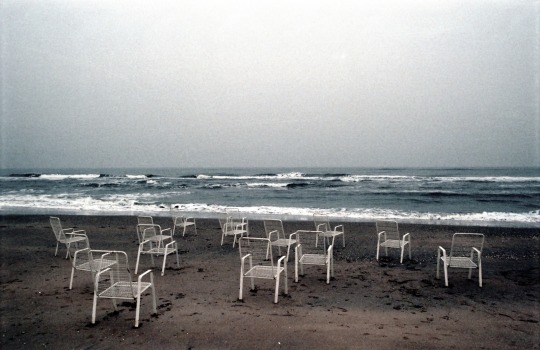#Netherlands news
Explore tagged Tumblr posts
Text
HEY GUYS!!
GUYS!!!
FRANCE HAS REACHED THE REQUIRED NUMBER OF SIGNATURES ON THE CITIZEN'S INITIATIVE AGAINST CONVERSION THERAPY IN THE EU!!

ONE COUNTRY DOWN, SIX TO GO!!
We also need still quite a few signatures in order to reach the one million required.
As to date, the six other countries with the most signatures are:
Spain - 38.72%
Finland - 30.31%
Ireland - 24.86%
Netherlands - 24.15%
Germany - 23.54%
Belgium - 23.09%
So yeah, still a long way to go, but we ARE slowly getting closer. Don't stop now! Don't let this stay within the community, either, if you have any friends or family who are open to queer rights, get them to sign, too!
#good news#politics#EU politics#queer rights#human rights#lgbt rights#anti-conversion therapy#France#And I'll just tag the other countries mentioned in the post too#Spain#Finland#Ireland#Netherlands#Germany#Belgium
40K notes
·
View notes
Text
Horror as girl, 11, stabbed to death in broad daylight - police arrest man, 29
A man has been arrested after an 11-year-old girl was stabbed to death in a town in the Netherlands. Dutch police have said the emergency services were called to the town of Nieuwegein after the stabbing at about 3pm local time (2pm GMT) on Saturday (February 1). Despite their best efforts, paramedics were unable to save the girl’s life. Neighbours told Dutch daily the Telegraaf that the girl was…
#Netherlands#Netherlands girl attacked#Netherlands knife attack#Netherlands knife crime#Netherlands latest#Netherlands news
0 notes
Text
"Amsterdam’s roofs have just been converted into a giant sponge that will make the city more climate resilient.
The Dutch have always been famous for their ability to control water, born out of the necessity of their homeland, much of which is below sea level.
Now, their expert water management skills are transforming the city skyline in the capital city of Amsterdam from one of terracotta tile, concrete, and shingles into green grass and brown earth.
It’s part of a new climate-resiliency trend in architecture and civic planning known as the ‘sponge city concept,’ in which a garden of water-loving plants, mosses, and soil absorbs excess rainwater before feeding it into the building for use in flushing toilets or watering plants on the ground.
If heavy rains are predicted, a smart valve system empties the stored rainwater into the municipal storm drains and sewers in advance of the weather, allowing the roof to soak up water and reduce flooding in the city.
In this way, the rooftops of buildings can be wrung out and filled up just like a sponge.
In Amsterdam, 45,000 square meters, or 11 acres of flat metropolitan rooftops have already been fitted with these systems, and the contracting firms behind the technology say they make sense in dry climates like Spain just as much as in wet climates like Amsterdam...
A 4-year project of different firms and organizations called Resilio, the resilient network for smart climate adaptive rooftops, rolled out thousands of square meters of sponge city technology into new buildings. As with many climate technologies, the costs are high upfront but tend to result in savings from several expenditures like water utilities and water damage, over a long-enough time horizon...
All together, Amsterdam’s sponge capacity is over 120,000 gallons.
“We think the concept is applicable to many urban areas around the world,” Kasper Spaan from Waternet, Amsterdam’s public water management organization, told Wired Magazine. “In the south of Europe–Italy and Spain–where there are really drought-stressed areas, there’s new attention for rainwater catchment.”
Indeed the sponge city concept comes into a different shade when installed in drought-prone regions. Waters absorbed by rooftops during heavy rains can be used for municipal purposes to reduce pressure on underground aquifers or rivers, or be sweated out under the Sun’s rays which cools the interior of the building naturally.
Additionally, if solar panels were added on top of the rooftop garden, the evaporation would keep the panels cooler, which has been shown in other projects to improve their energy generation.
“Our philosophy in the end is not that on every roof, everything is possible,” says Spaan, “but that on every roof, something is possible.”
Matt Simon, reporting on the Resilio project for Wired, said succinctly that perhaps science fiction authors have missed the mark when it came to envisioning the city of the future, and that rather than being a glittering metropolis of glass, metal, and marble as smooth as a pannacotta, it will look an awful lot more like an enormous sculpture garden."
-via Good News Network, May 15, 2024
#amsterdam#netherlands#green roof#blue roof#city planning#urban#urban landscape#flood#climate change#climate action#climate emergency#climate hope#solarpunk#hope posting#go green#eco friendly#climate adaptation#sponge city#urban planning#good news#hope#rooftop garden
2K notes
·
View notes
Text

[SOURCE]
#yemen#jerusalem#tel aviv#current events#palestine#free palestine#gaza#free gaza#news on gaza#palestine news#news update#war news#war on gaza#nicaragua#germany#canada#netherlands#britain#icj case#icj ruling#genocide#gaza genocide
3K notes
·
View notes
Text

The Allies during World War II
The Axis here
#hetalia#historical hetalia#hws allies#hws england#hws russia#hws america#hws france#hws china#hws canada#hws poland#hws czechia#hws belgium#hws australia#hws norway#hws greece#hws netherlands#hws new zealand#hws india#hws cuba#hws philippines#hws luxembourg#had a go at drawing the all the allies in their uniforms and with certain elements that fits the 1930s and 40s#this list of allies is based on canon countries with governments in exile and alliances with the Allies#this was such a fun project - very time consuming but fun#and some of the uniforms are pre 1940s just because :)))
587 notes
·
View notes
Text


436 notes
·
View notes
Text
New Halloween illustrations for 2024 by Himaruya!


Source links: 1 2
Edit: Updated the tags for the characters here. Turns out the character between England and Spain is NOT Prussia, but Netherlands! If you look closer on his forehead, you can see his scar. Apologies about that!
#hetalia#aph#aph hetalia#hws#ヘタリア#hetalia news#hws hetalia#illustration news#aph italy#hws italy#aph germany#hws germany#aph japan#hws japan#aph america#hws america#aph england#hws england#aph france#hws france#aph russia#hws russia#aph china#hws china#aph spain#hws spain#aph netherlands#hws netherlands
403 notes
·
View notes
Text
Eva Vlaardingerbroek: Mark Rutte, former PM of The Netherlands, is the new leader of NATO, having ruined Holland he now wants to further ruin Europe. He is a WEF agent positioned for WWIII 🤔
#pay attention#educate yourselves#educate yourself#reeducate yourselves#knowledge is power#reeducate yourself#think about it#think for yourselves#think for yourself#do your homework#do some research#do your own research#do your research#ask yourself questions#question everything#eva vlaardingerbroek#netherlands#news#government corruption#evil lives here#world news
308 notes
·
View notes
Text

Randomised sims be like
#eurovision#esc 2024#esc finland#esc netherlands#esc switzerland#windows95man#joost klein#nemo#sorry for not posting so many memes this year#hopefully live shows will bring new material
1K notes
·
View notes
Text



#joost klein#ughhh my new fav pics#this joost can snap me in half like a glowstick byeee#boys DROOL#joost#europapa#justice for joost#joostice#esc netherlands#eurovision#netherlands#esc 2024
231 notes
·
View notes
Text




Starboy Interlude (I’m obsessed with these!!)
#joost klein#joostice#12 points to the netherlands#joost klein imagine#name dropping for the new fic I’m working on? uhm duh
210 notes
·
View notes
Text

North Sea coast, Netherlands, 1985. From the Budapest Municipal Photography Company archive.
332 notes
·
View notes
Text



joost is in italy with tommy cash!!
#joost#joost klein#joostblr#europapa#netherlands#europe#joostklein#europa#tommy cash#eurovision#italia#italy#estonia#2025#music#new music
89 notes
·
View notes
Text
"Tuesday’s [April 9, 2024] definition-shifting court ruling means nearly 50 governments must now contend with a new era of climate litigation.
Governments be warned: You must protect your citizens from climate change — it’s their human right.
The prescient message was laced throughout a dense ruling Tuesday from Europe’s top human rights court. The court’s conclusion? Humans have a right to safety from climate catastrophes that is rooted in their right to life, privacy and family.
The definition-shifting decision from the European Court of Human Rights means nearly 50 governments representing almost 700 million people will now have to contend with a new era of litigation from climate-stricken communities alleging inaction.
While the judgment itself doesn’t include any penalties — the case featured several women accusing Switzerland of failing to shield them from climate dangers — it does establish a potent precedent that people can use to sue governments in national courts.
The verdict will serve “as a blueprint for how to successfully sue your own government over climate failures,” said Ruth Delbaere, a legal specialist at Avaaz, a U.S.-based nonprofit that promotes climate activism...
Courting the courts on climate
The European Court of Human Rights was established in the decade following World War II but has grown in importance over the last generation. As the judicial arm of the Council of Europe, an international human rights organization, the court’s rulings are binding on the council’s 46 members, spanning all of Europe and numerous countries on its borders.
As a result, Tuesday’s [April 9, 2024] ruling will help elevate climate litigation from a country-by-country battle to one that stretches across continents.
Previously, climate activists had mostly found success in suing individual countries to force climate action.
A 2019 Dutch Supreme Court verdict forced the Netherlands to slash its greenhouse gas emissions by 25 percent, while in 2021 a French court ruled the government was responsible for environmental damage after it failed to meet greenhouse gas reduction goals. That same year, Germany’s Constitutional Court issued a sweeping judgment that the country’s 2019 climate law was partly “unconstitutional” because it put too much of the emissions-cutting burden on future generations.
Even in the U.S., young environmental activists won a local case last year against state agencies after arguing that the continued use of fossil fuels violated their right to a "clean and healthful environment."
But 2024 is shaping up to be a turning point for climate litigation, redefining who has a right to sue over climate issues, what arguments they can use, and whom they can target.
To start, experts overwhelmingly expect that Tuesday’s ruling will reverberate across future lawsuits — both in Europe and globally. The judgment even includes specifics about what steps governments must take to comply with their new climate-related human rights obligations. The list includes things like a concrete deadline to reach climate neutrality, a pathway to getting there, and evidence the country is actually on that path...
Concretely, the verdict could also affect the outcomes of six other high-profile climate lawsuits pending before the human rights court, including a Greenpeace-backed suit questioning whether Norway's decision to grant new oil and gas licenses complies with its carbon-cutting strategy.
An emerging legal strategy
In the coming months, other international bodies are also expected to issue their own rulings on the same thorny legal issues, which could further solidify the evolving trend.
The International Court of Justice, the International Tribunal for the Law of the Sea and the Inter-American Court of Human Rights all have similar cases working through the system.
"All these cases together will clarify the legal obligations of states to protect rights in the context of climate change — and will set the stage for decades to come," said Chowdhury, from the environmental law center."
-via Politico, April 9, 2024
#europe#human rights#legal system#international politics#climate change#climate emergency#climate hope#international law#netherlands#france#germany#united states#switzerland#good news#hope
2K notes
·
View notes
Text

#yemen#jerusalem#tel aviv#current events#palestine#free palestine#gaza#free gaza#news on gaza#palestine news#news update#war news#war on gaza#students for justice in palestine#gaza solidarity encampment#gaza protests#netherlands
1K notes
·
View notes
Text

Hundreds of 2,000-Year-Old Gold and Silver Coins Unearthed in Netherlands
Metal Detectorists in the Netherlands Stumbled Onto Hundreds of Looted Coins From the Roman Conquest of Britain.
The 404 coins, including 44 from Britain, are believed to be a mix of military pay and the spoils of war, stashed by a Roman soldier after he returned to the European continent.
As they swept over the muddy fields of Bunnik, a village in the Netherlands’ Utrecht Province that once marked the northern edge of the Roman Empire, in 2023, two metal detectorists unearthed a remarkably extensive and diverse haul of coins from the first century C.E.
There find—a collection of 404 gold and silver coins of Roman, British and North African origin—is the first of its kind unearthed on the European continent, according to a statement.



For Gert-Jan Messelaar and Reinier Koelink, the men with the metal detectors, the historic discovery came as something of an accident. They were combing the fields for a local fruit grower’s lost tractor key in Houten when they decided to give up and go over to a nearby field in Bunnik, where they had previously found a few coins, reports RTV Utrecht’s Bas Teunissen.
Koelink made the first find: a golden Celtic coin resting near the surface of the mud. The pair found a few more loose coins—including the largest Roman coin ever found in the province—but their metal detectors would not stop beeping. Messelaar finally stuck his hand into a shallow hole in the ground, where he uncovered a stash of hundreds of coins. “Bingo,” he recalls thinking, according to RTV Utrecht.
Koelink and Messelaar used clumps of mud to keep the coins together before bringing the haul back home, where they carefully cleaned, sorted and reported their findings to cultural heritage authorities. Then, they celebrated.
“We opened a bottle of champagne,” Messelaar tells the Guardian’s Daniel Boffey. “You never find this.”


Following the detectorists’ initial discovery of 381 coins in the summer of 2023, the Dutch Cultural Heritage Agency, with the help of Koelink and Messelaar, conducted additional excavations in the surrounding areas, finding another 23 coins.
Now, the grand total of 404 coins will now join a permanent exhibition titled “The Netherlands in Roman Times” at the National Museum of Antiquities in Leiden.
Dated to between 200 B.C.E. and 47 C.E., 360 of the coins are Roman in origin. Of these, 288 are denarii, the standard silver coin, and 72 are aurei, a denser, golden coin that was originally worth 25 denarii.
Many of the Roman coins bear the portrait of Emperor Claudius, who reigned between 41 and 54 C.E. One depicts Julius Caesar, while another even rarer coin shows the likeness of Juba, the ruler of Numidia, a kingdom in northern Africa that roughly corresponds to modern-day Algeria.
Two of the Claudius coins dated to between 46 and 47 C.E. are from identical dies, suggesting they were distributed to Roman soldiers as military pay, write Anton Cruysheer, an archaeologist with the Utrecht Landscape and Heritage Foundation, and Tessa de Groot, an archaeologist with the Cultural Heritage Agency of the Netherlands, for UtrechtAltijd.


The 44 non-Roman coins are perhaps the most notable of the entire stash. The golden alloy coins, known as staters, bear the inscription “CVNO,” the first four letters of Cunobelinus, the Latin name of Celtic King Cunobelin, who reigned between roughly 10 and 42 C.E. in southeastern Britain.
Cruysheer and de Groot argue that the eclectic composition of the hoard “strongly suggests a connection to the conquest of Britain” under Aulus Plautius, a Roman general who Claudius dispatched to cross the Channel and invade the island in 43 C.E.
The wide range of dates of the Cunobelin staters, including four posthumously issued coins, indicates that the stash was removed from circulation in one fell swoop, like Roman troops looting the newly conquered territory, according to UtrechtAltijd.
Combined with the Roman coins used as military pay, the entire stash strongly resembles spoils of war. Discovered less than a foot beneath the surface, where it was probably buried in a leather pouch that has since decayed, the cache was left in a region where Roman troops were known to have amassed before the invasion of Britain.
“This is the first time that physical evidence of the return of the troops has been found,” Cruysheer tells the Guardian. “Apparently, they came back with all sorts of things. That is new information.”
By Eli Wizevich.
#Hundreds of 2000-Year-Old Gold and Silver Coins Unearthed in Netherlands#Bunnik#“The Netherlands in Roman Times”#National Museum of Antiquities in Leiden#gold#silver#roman coins#denarii#denser#aurei#Emperor Claudius#Julius Caesar#Juba#Celtic King Cunobelin#ancient coins#ancient artifacts#metal detecting#archeology#archeolgst#history#history news#ancient history#ancient culture#ancient civilizations#roman history#roman empire#roman emperor
62 notes
·
View notes